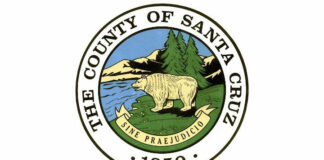Halloween is soon upon us, and our little trick-or-treaters will be carrying home bags full of candy. As candy is full of sugar, I’d like to discuss the effects of sugar on our health.
The average American consumes a whopping 2 to 3 pounds of sugar a week, about 130 pounds a year. That’s up from 25 pounds per year just 20 years ago. This rapid increase in consumption is because sugar is increasingly being added to many of our daily foods, such as soda, breakfast cereal, bread, mayonnaise, peanut butter, salad dressing, canned goods and many other food products.
The main problem of eating too much sugar is that it adds extra calories to our diet; in most cases, much more than we need. Extra calories add up to weight gain and eventually to obesity, which is one of our greatest health epidemics. Obesity from eating too much sugar can cause health problems such as diabetes, high blood pressure, heart attacks and strokes.
Sugar is the main cause of dental cavities and tooth decay. It is also associated with an increase in triglycerides (a type of fat in the bloodstream), which can be another cause for heart disease.
There are many other possible — but not necessarily proven — health problems related to excessive dietary sugar, such as suppression of the immune system, hyperactivity in children, arthritis, asthma and many more diseases.
Some think that natural sugar, such as that found in fruits, dairy products and other foods, is healthy. This is true only to the extent that these foods also contain healthy amounts of vitamins, fiber and other nutrients.
Sugar is sugar, no matter what it’s called. There are brown sugar, high-fructose corn syrup, dextrose, glucose, lactose, maltose, sucrose, molasses, honey and others. They all contribute calories.
The American Heart Association says that women should get no more than 100 calories a day from added sugars. That’s about 7 teaspoons, roughly 25 grams, which is about equal to one typical candy bar. Men should get no more than 150 calories from sugar. That’s about 10 teaspoons, roughly 38 grams, the amount found in 12 ounces of soda. Most Americans get more than 22 teaspoons — 355 calories — of added sugar a day, far exceeding healthy guidelines.
The best way to cut back on added sugar is to limit, if not eliminate, soft drinks from your diet. Many other drinks are high in sugar, including ready-to-drink teas, sweetened alcoholic or caffeinated drinks, and juice drinks. To satisfy sweet cravings, try eating fresh fruit. For snacks, swap candy and sweets for air-popped popcorn, dry roasted nuts and baked tortilla chips.
Look at food labels, which list the ingredients and often give the amount of sugar measured in grams.
The bottom line is that most of us consume enough naturally occurring sugar in a well-balanced diet. The more we can cut back on candy, sodas, pastries, cakes and cookies, the healthier we will be.
Terry Hollenbeck, M.D., is an urgent-care physician at Palo Alto Medical Foundation Santa Cruz in Scotts Valley. Readers can view his previous columns on his website, valleydoctor.wordpress.com, or e-mail him at va**********@*******al.net. Information in this column is not intended to replace advice from your own health care professional. For any medical concern, consult your own doctor.












